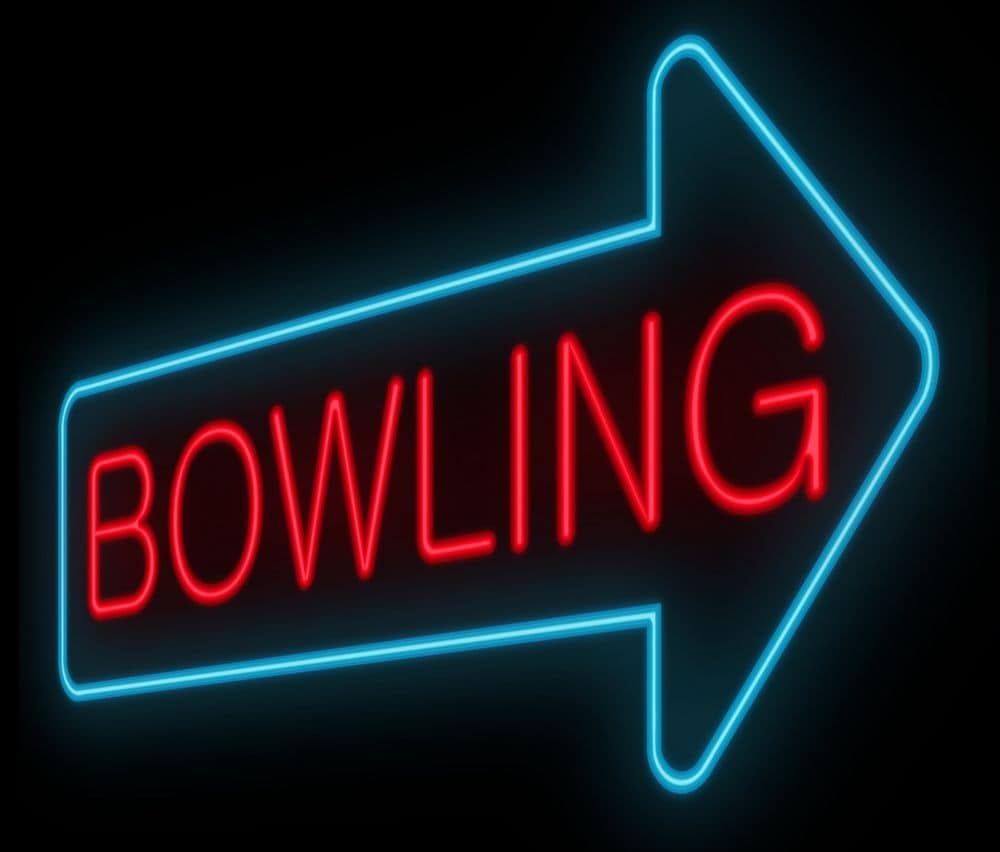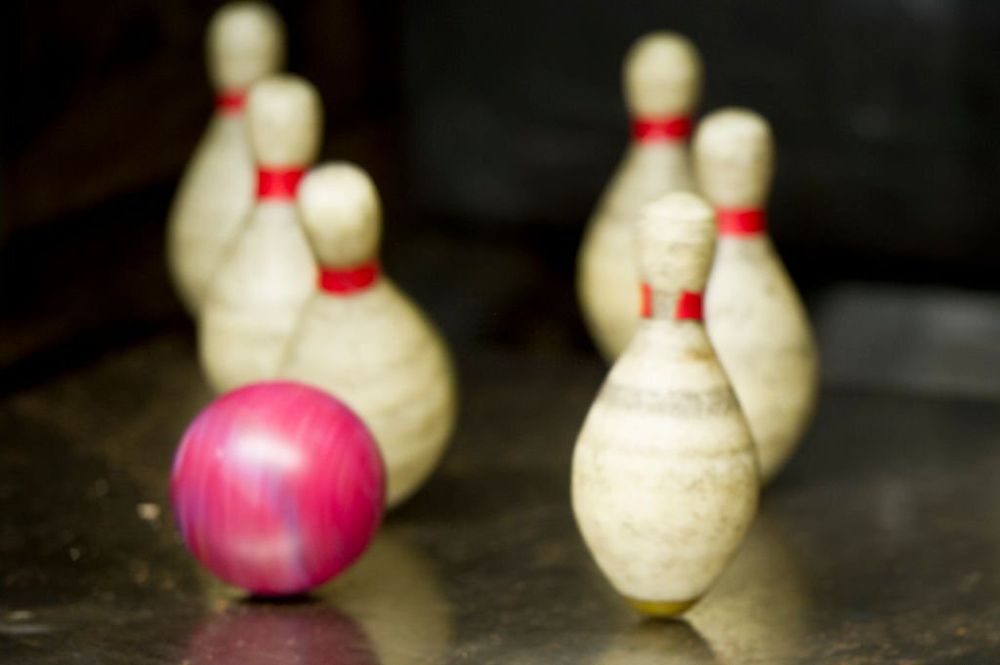Bowling has been a popular pastime for centuries, enjoyed by people of all ages and walks of life. But where did bowling come from?
How far back can the origins of this beloved game be traced? This article will explore the history of bowling, taking us on a journey back to ancient civilizations and uncovering its fascinating origin story.
From Germany to Egypt, evidence suggests that variations of a primitive form of bowling have existed since as early as 5200 BC.
The Romans and other European cultures are also credited with contributing to bowling’s development over the years.
Through royal patronage in England during the Middle Ages and its spread across America in the 19th century, we begin to understand how what started out as simple skittles evolved into today’s version of ten-pin bowling.
Finally, modern technology has allowed major advances such as automated scoring systems and lanes made from synthetic materials, allowing for greater convenience and accuracy than ever before.
In this article we’ll look at each stage in the evolution of bowling – from its earliest beginnings right up until now – so let’s get rolling!
Ancient Sport Predecessors
Many people think of bowling as a modern invention, but the game has its roots in ancient civilizations.
It’s true that today’s bowling alleys are filled with neon lights and automated scoring systems, yet traces of the sport can be found thousands of years ago. Let’s take a look at how this beloved pastime evolved over time.
To start, it’s important to note that early forms of bowling were quite different from what we know today.
Ancient societies used balls made out of stone or wood and would aim to knock down objects like animal bones or stones arranged at specific intervals – not pins! Some cultures even had their own sets of rules for playing these types of games.
The exact origin is still debatable, though some historians believe that Germanic tribes may have been among the first to play a version similar to modern-day bowling during the Middle Ages.
The Europeans began using wooden pins instead of other objects, and by the end of the 16th century they had developed an indoor form called Kegeln which spread quickly across Europe and eventually became popular throughout parts of America too.
Bowling continues to evolve: technological advances make it easier than ever for bowlers around the world to compete on a global level.
As technology changes so does our perception about where this beloved game came from; no matter what though, one thing will always remain certain –bowling offers fun for all ages far into the future!
Archaeological Evidence Of Bowling Games
Further evidence of bowling’s ancient roots can be seen in the archaeological record.
While it is difficult to pinpoint exactly when and where this game originated, there are ample artifacts that suggest bowling dates back hundreds if not thousands of years.
Let’s take a closer look at how our ancestors might have enjoyed the sport before us.
First we must consider what these ancient civilizations had available for materials; most likely they used whatever was readily accessible such as stone or wood.
Not only would these objects serve as balls but also pins which could range from animal bones to pieces of pottery or stones set up in certain arrangements.
Additionally, artwork depicting people playing similar games has been found all over the world indicating the widespread popularity of some form of bowling-like activity throughout different cultures and times.
For example, hieroglyphics in an Egyptian tomb show men using stone balls to knock down wooden pins – which looks surprisingly close to today’s version!
Thus, with further investigation into both material remains and artistic renderings, it becomes clear that bowling is far more than just a contemporary pastime –it is an activity deeply rooted in human history across many societies around the globe.
The Development Of The Modern Game Of Bowling
As if it were a long-lost relic, the modern game of bowling has been unearthed from its ancient beginnings.
It has since been polished and refined over centuries to become the beloved leisure activity we know today. Here’s how it all came together:
- To begin with, during medieval times in Europe, wooden pins began replacing stone objects as they became more readily available – though balls made out of wood or leather probably remained favored materials at this point.
- In addition, certain features that are still seen in today’s version such as an alley and gutters for errant throws also developed around this time period.
- Finally, a crucial breakthrough was when English King Edward III declared lawn bowling (or bowls) as illegal because he thought people had become too addicted to playing! This episode provided motivation for inventors to create alternative ways to play the sport indoors; thus giving birth to the modern form of bowling found across the world.
Thus, through countless innovations and small adjustments throughout history, what started out as simple stones knocking down wooden pins evolved into one of America’s most cherished pastimes – enjoyed by both casual players and professional athletes alike.
Historical References To The Game In Different Cultures
Though the origins of bowling can be traced back to ancient civilizations, references to the game appear in many different cultures throughout history.
In Egypt and Rome, for example, archaeologists have found evidence that people enjoyed a type of bocce ball – an Italian variant still popular today – as far back as 5200 BC.
In addition, records from Eastern Asia point to games similar to modern-day ten-pin bowling being played in China during the Song Dynasty (960–1279 AD).
This form of bowling involved throwing stones at nine objects arranged in a square formation. It soon spread through Japan where it was known as ‘kegeling’.
Today’s version of the sport is undoubtedly influenced by all these predecessors; but what remains unchanged is its appeal across all ages and nations – providing a fun way for families, friends and strangers alike to come together and share some friendly competition.
Changes In Rules And Equipment Over Time
Through the centuries, bowling has evolved to become one of the most popular recreational sports in the world. In fact, according to a report by The Bowling Foundation, an estimated 100 million people play the game each year!
An important part of this evolution has been changes to both the rules and equipment used for playing.
For example, early games involved using stones or logs as “pins” (the objects you aim at), whereas modern-day bowling uses standardized balls and pins that are carefully designed for maximum accuracy.
Similarly, over time different scoring systems have been implemented in order to make the game easier to learn and more enjoyable overall.
These modifications have no doubt added to bowling’s appeal; making it accessible even to those with little prior knowledge or experience – while still providing enough challenge and excitement for experienced bowlers too.
It is clear that although times may change, some things remain constant – like our collective love of ten-pin bowling!
Popularity In Europe And America
Today, it is hard to imagine a world without bowling – but its popularity has not always been so widespread.
In fact, the modern version of ten-pin bowling only began to take off in Europe during the 19th century – gaining traction in countries like Germany and England before spreading to America at the turn of the 20th century.
It was there that bowling truly flourished; becoming firmly embedded into popular culture thanks to iconic films such as The Big Lebowski (1998).
The game’s accessibility has also contributed to its success. Usually played indoors, with no need for expensive equipment or even much physical exertion, it appeals to people from all walks of life.
With many smaller venues offering discounts on shoe rentals and games for families too, it has become an attractive option for those looking for something fun to do together – especially when combined with refreshments!
It is easy to see why bowling remains so beloved today; offering both opportunities for fierce competition and laidback socializing alike.
From ancient civilizations through medieval times and right up until now, this classic pastime continues to captivate us all.
Variations Of The Traditional Form
Throughout the centuries, different variations on bowling have emerged. From its humble beginnings as a simple game of skittles in ancient
Egypt to modern-day alley cats and pinsplitters, it’s interesting to see how the sport has evolved over time.
Take lawn bowling for example. Dating back hundreds of years, this variant can be traced to medieval Europe where balls were rolled across grassy greens instead of lanes made from wood or synthetic materials.
It is still popular today; with competitive tournaments occurring regularly around the globe – although players typically use smaller balls than those used in ten-pin bowling.
Last but not least is duckpin bowling, which first gained traction in America during the early 20th century.
Here, small wooden pins are placed at one end of an oiled lane while competitors roll down three much lighter balls per frame – all aiming to strike as many pins as possible!
This unique version requires skillful precision and accuracy; making it a true test of nerve and perseverance alike.
Clearly, there are plenty of ways enjoy this beloved pastime – no matter what your style or preference may be!
Each variation offers something special that resonates with players both old and new – proving why generations continue to love this classic game so dearly.
Future Outlook For The Sport
As the sport of bowling continues to evolve, its popularity and reach only seem to be growing.
From multi-million dollar tournaments televised around the world to local leagues for all ages, it’s easy to see why this game is still a fan favorite after centuries in existence.
Here are just a few reasons why:
- Bowling has something for everyone – from serious competitors looking for prize money to casual players who want an enjoyable evening out with friends.
- It’s one of the oldest sports in history; making it a fantastic way to learn about our shared past while having fun at the same time!
- The technology surrounding bowling lanes has become increasingly advanced; allowing bowlers of any skill level to hone their skills through interactive experiences like virtual reality (VR) simulations or motion sensors that track every throw.
- Finally, as awareness increases regarding accessibility regulations, more people than ever before can participate in this beloved activity – regardless of physical limitations they may have previously faced.
It’s clear that with so many factors propelling the growth of bowling into new heights, there really is no telling what lies ahead for this classic game! With so much potential on the horizon, it will certainly be exciting to watch where things go next.
Conclusion
To conclude, bowling has a long and fascinating history that can be traced back to ancient civilizations.
From archaeological evidence of the game in different cultures around the world, we know that it was an important part of social gatherings and rituals for centuries.
The modern form of bowling took shape over time with modifications to rules and equipment, resulting in its popularization in Europe and America.
Today, there are many variations on traditional bowling forms, from duckpin to candlepin, allowing people all over the world to enjoy this beloved sport.
With its various iterations and increasing popularity throughout the years, one thing is certain: bowling will continue to roll into our future as a timeless tradition!
It’s safe to say that while other activities may come and go like passing clouds on a stormy day, nothing can strike down the enduring legacy of bowling—a true classic that stands tall among sporting games.









